You are viewing the article 6 Common errors when connecting TV to laptop via HDMI and how to fix it at Tnhelearning.edu.vn you can quickly access the necessary information in the table of contents of the article below.
Connecting a laptop to a TV via HDMI has become a popular trend in recent years, as it allows users to enjoy their favorite movies, shows, and games on a larger screen. However, despite its increasing popularity, this process is not without its challenges. Many individuals encounter various errors when attempting to connect their TV to a laptop, resulting in frustration and confusion. In this guide, we will explore six common errors that occur during this connection process and provide practical solutions to fix them. Whether you are a tech-savvy individual or someone new to this experience, this guide will equip you with the knowledge to overcome these obstacles and successfully connect your laptop to a TV via HDMI.
Connecting a laptop to a TV with an HDMI cable will make it quick and easy to transmit high-quality images and sound at the same time. If in the process you encounter some connection errors, please refer to the following article of Tnhelearning.edu.vn to know how to fix it!
TV does not recognize laptop or receive sound but not picture
Cause: It may be because you have not turned on the mode that allows you to project the laptop screen on the TV.
How to fix:
With laptop operating system Windows 7/8/10: Simultaneously press 2 buttons Windows key + A or Windows key + P to turn on Project.

The Project panel will appear on the right with 4 modes for you to choose from:
- PC screen only: Only display the screen on the Laptop.
- Duplicate: Display the same 2 screens on both Laptop and TV.
- Extend: Extend the screen, 2 screens will link together.
- Second screen only: Display only the screen on the TV.
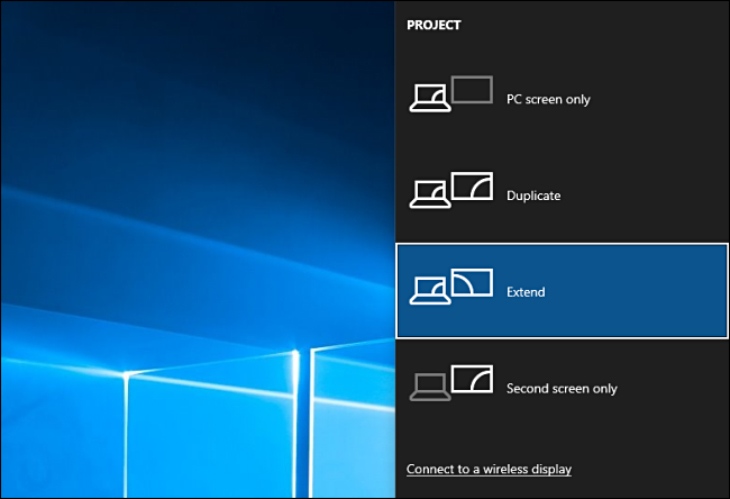
With Windows XP operating system laptop: Select Control Panel > Display > Display Properties > Settings and select number 2 (number 1 is laptop screen)
- Use this device as the primary monitor: Display the TV screen as the primary monitor
- Extend my Windows desktop onto this monitor: Extend the screen, 2 monitors will link together.
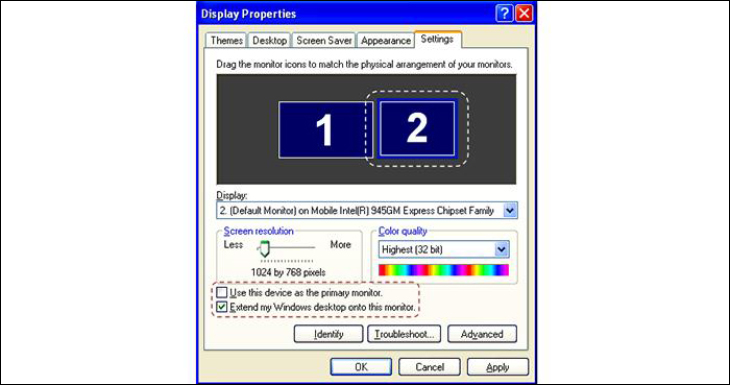
TV not playing content error
Cause: Because the TV has many HDMI ports and you have not selected the correct HDMI port to display on the TV.
How to fix:
Step 1: Look at the back of the TV, see how many numbers and symbols you have plugged into the HDMI port.
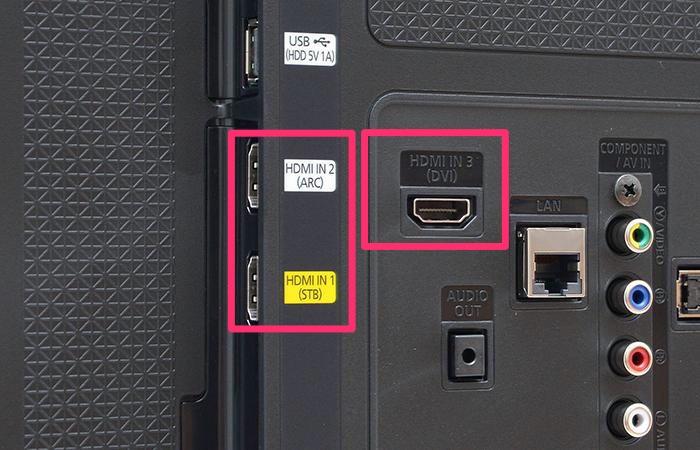
Step 2: On the TV remote, press the INPUTS , SOURCE button or the button with the arrow icon (depending on the TV).

Step 3: You choose the corresponding HDMI port to connect to the laptop.
As shown in the example below, if on the TV you plug the HDMI cord into the HDMI 1/MHL port, please choose the correct port!
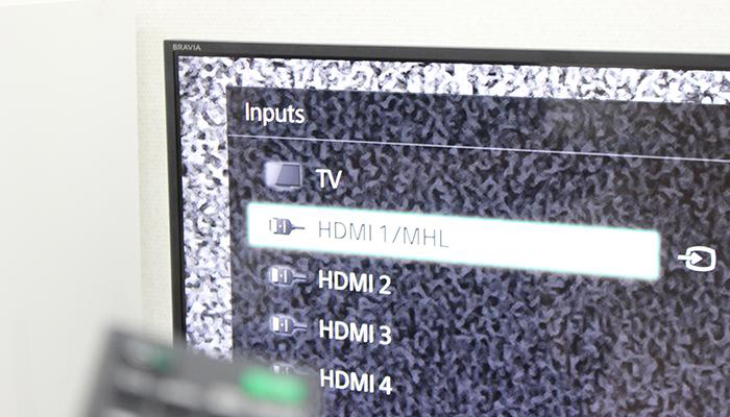
HDMI-connected TV displays a narrower image compared to laptops
Cause: Because the TV is at the wrong picture ratio with the laptop (because the ratio of the screen size of the TV and laptop is not the same).
How to fix: You click the Size button on the TV remote (if available) or press the Menu button.

Go to Settings > Picture > TV Aspect Ratio and select 16:9 .
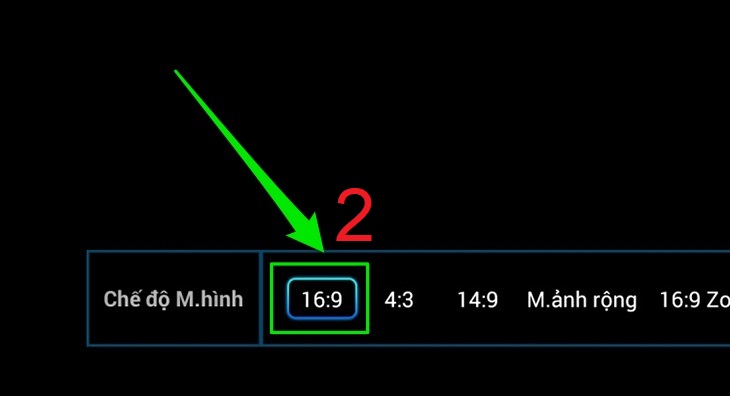
HDMI-connected TV has picture but no sound
Cause: After checking the volume on the laptop, the TV is not turned off, is opened at a high level, the video/music file has sound but the TV still has no sound, it may be because the sound has not been selected to output through television.
How to fix:
Step 1: Right-click on the sound icon in the lower right corner of the screen > Select Sound
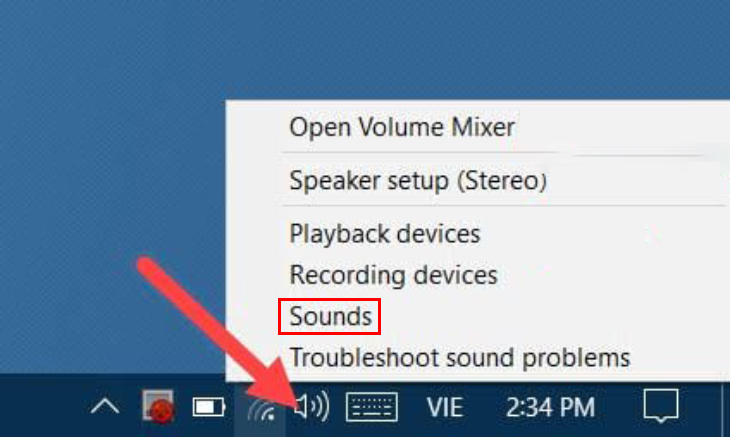
Step 2: You switch to the Playback tab
Step 3: Here you will see your TV is connected but the audio source is from the laptop. You select the TV and select Set Default, then select OK.
If you don’t see the TV’s icon, click in an empty space > select Show disabled devices .
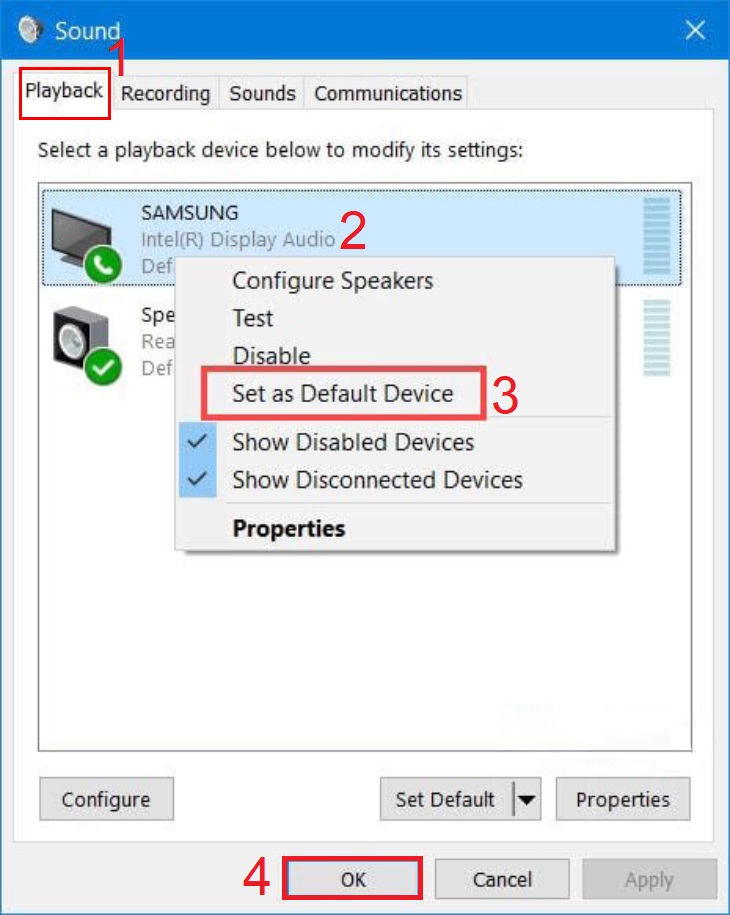
Weak TV, no signal
If you have done all of the above, and the TV still has an error when connecting to the laptop, it is possible that the HDMI cable you are using is of poor quality and is not compatible with the TV. Now try with another HDMI cable.

Unsupported HDMI signal error
Cause: It may be due to electrical noise inside the TV’s capacitor affecting the settings.
How to fix:
Turn off the TV, disconnect the HDMI cable and the power cable of the TV. After about 1 minute, please reconnect in the order of the power cable and then the HDMI cable.

The above are common errors when connecting a laptop to a TV via HDMI, hopefully the article will bring a lot of useful information to you. If you have any questions, leave your comments below!
In conclusion, connecting a TV to a laptop via HDMI can sometimes lead to common errors that can be frustrating to troubleshoot. However, by understanding these errors and following the prescribed solutions, you can easily fix the issues and enjoy a seamless connection between your TV and laptop.
One common error is the absence of a display or sound on the TV. To fix this, make sure both devices are powered on and the correct input source is selected on the TV. Additionally, check if the HDMI cable is securely connected and try using a different HDMI port on the TV or laptop.
Another error is the presence of a distorted or blurry display. To fix this, adjust the screen resolution settings on your laptop to match the native resolution of your TV. This will ensure a clear and crisp display.
Audio issues can also occur when connecting the TV to the laptop via HDMI. In such cases, open the sound settings on your laptop and ensure that the HDMI output is selected as the default audio device. You can also try adjusting the volume settings on both devices or using a different HDMI cable if necessary.
Some laptops may encounter an issue where the display appears on the TV but not on the laptop screen. This can be resolved by pressing the correct function key combination on your laptop to enable the dual-display mode. Usually, the combination involves the “Fn” key along with one of the F1-F12 keys that has a monitor symbol.
In some instances, the laptop might not detect the TV at all when connected via HDMI. To troubleshoot this, make sure your laptop’s graphics drivers are up to date. You can visit the manufacturer’s website to download and install the latest drivers specific to your laptop’s model.
Lastly, intermittent connection issues may arise due to faulty HDMI cables or ports. To fix this, try using a different HDMI cable or connecting to a different HDMI port on either device. Additionally, ensure that the cable is not bent or damaged.
By being aware of these common errors and implementing the suggested solutions, you can easily troubleshoot any issues when connecting your TV to a laptop via HDMI. With a successful connection, you can enjoy a larger display, enhanced audio, and a more immersive multimedia experience.
Thank you for reading this post 6 Common errors when connecting TV to laptop via HDMI and how to fix it at Tnhelearning.edu.vn You can comment, see more related articles below and hope to help you with interesting information.
Related Search:
1. Why is my laptop not connecting to my TV via HDMI?
2. How to troubleshoot HDMI connection issues between laptop and TV?
3. Solutions for laptop HDMI not displaying on TV screen.
4. Common problems when connecting laptop to TV via HDMI.
5. Laptop HDMI connection not working – troubleshooting guide.
6. How to fix sound issues when connecting laptop to TV with HDMI.
7. Laptop HDMI output not showing on TV – troubleshooting tips.
8. How to resolve resolution problems when connecting laptop to TV via HDMI.
9. Laptop HDMI to TV not working – troubleshooting steps.
10. Tips for a successful laptop to TV HDMI connection.



